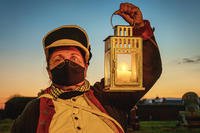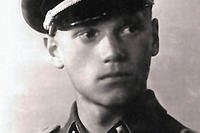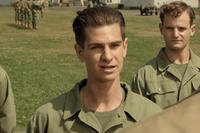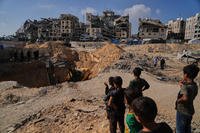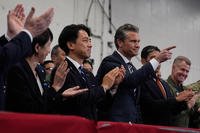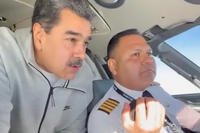When the United States invaded Panama on Dec. 20, 1989, a special operations mission called Operation Acid Gambit was given the green light to begin at the same time as an aerial attack on dictator Manuel Noriega's command center, the comandancia.
For months, 23 members of the U.S. Army's Delta Force had been training to rescue American citizen Kurt Muse. Muse had been a prisoner in Panama City's Carcel Modelo prison for nine months but, as tensions mounted between Noriega's regime and the United States, he suddenly became Noriega's hostage.
Noriega vowed that the first bullet fired in a conflict between the countries would be the one that killed Muse. He even put a Panamanian Defense Forces (PDF) soldier in front of his cell to ensure Muse died before he could be rescued.
Read: How an American Living in Panama Began the Ouster of Dictator Manuel Noriega
Operation Acid Gambit required Army Special Forces to land on the prison roof, kill Muse's would-be executioner, fight their way to his cell, break open the lock and extract their "precious cargo" before taking him to the roof. There, MH-6 Little Bird helicopters would whisk them all back to the nearby Howard Air Force Base.

The mission was ultimately a success, but it was not without complications. At a 2022 event for the Silent Warrior Foundation called "Whiskey & War Stories," Muse and members of his rescue team (who asked to remain anonymous) talked about the operation and what happened that night.
The Enemy Gets a Vote
Noriega's comandancia was directly across from the prison yard and would be full of enemy PDF soldiers.
In order for the rescue team to extract Muse before his executioner could pull the trigger, one of the Special Forces team would have to lower himself down the side of the prison wall. Dangling in front of Muse's cell, he would need to kill the gunman while possibly under fire in the middle of a full-blown war.
It was very likely that the Little Bird helicopters would signal to the city's defenders that something was amiss, and the sight of a large soldier with a rifle hanging from the prison roof would attract every gun in the area.
When the mission began, one of the operators hammered his climbing gear into the prison roof and descended down the side. He wasn't three feet down before the PDF started firing on him, and the rest of the SF team had to open up on the PDF positions. If the secret wasn't out when they landed, it was by then.
Luckily for Muse and the team, the gunman who was supposed to kill Muse fled instead, barricading himself in a nearby room.
Backup Has Its Own Problems
On the night of Dec. 20, the MH-6 Little Birds making the drop onto the prison rooftop were flanked by two MH-6 gunbirds on each side of the aircraft as they made their way from Howard Air Force Base. The PDF knew something might happen and were ready for it, as evidenced by the amount of fire the Little Birds took along their flight path.
They found the prison lit up like Christmas. After the soldiers landed on the roof, the gunbirds were supposed to help secure the area by making attack runs on nearby targets. Their chief target was the comandancia. While making a gun run on a nearby high rise, one of the gunbirds took fire, its engine died and it crashed into the comandancia.
The crew survived the crash, but had a bigger problem. The comandancia was at the top of a list of targets scheduled to be leveled by AC-130 gunships as soon as a shaped charge blew the roof door to the prison open. Suddenly, American troops were inside Noriega's headquarters building, minutes away from being destroyed along with it.
They had to evade and escape PDF guards on their way out of the building, which included scaling a 12-foot wall. Again, as luck would have it, one of the PDF guards surrendered to them and led them over the wall, where they could link up with American armored personnel carriers patrolling the streets.
Infiltration
Back on the roof of the prison, the operators were able to blow the door completely off its foundation. In his cell, Muse was hiding behind a wall, not knowing where his executioner was as the American soldiers moved into the prison.
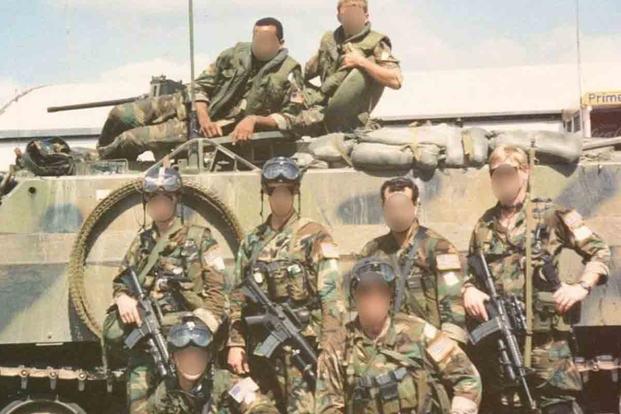
In Muse's book, "Six Minutes to Freedom," Special Forces soldiers recall in interviews that, once in the building, they were able to flow like water, killing the guards and breaking the lock to Muse's cell. They equipped their "precious cargo" with a helmet and flak vest before taking him up to the roof to fly back to Howard Air Force Base.
Exfiltration Doesn't Go as Planned
With the Delta team and Muse loaded onto the Little Bird helicopters, they were all ready to depart. The final soldier boarded and gave the pilots a thumbs-up to take off. The MH-6 tried four times to lift off the roof, but it was too heavy.
The team leader made a split-second decision: He told one of the soldiers to grab a machine gun and get off the bird. With complete trust in the team leader, that soldier and an M60 gunner got off the helicopter so it could leave. It departed, leaving the two soldiers alone on the roof, hidden in the shadows and surrounded by Panamanian soldiers
After the helicopter departed, the two discovered that their team leader had remained on the roof with them. Another helicopter was already on the way to retrieve them.
It's Not Over Until It's Over
As the helicopter carrying Muse and his rescuers made its way back to Howard Air Force Base, it began taking fire from the ground. One lucky shot managed to hit the Little Bird's engine, forcing it to crash-land.

Once it was on the ground, all of the PDF soldiers in the area began to fire on the target. Everyone on board survived the crash landing, but the helo was being mercilessly peppered with small-arms fire. The first thought going through the minds of the Delta team was securing its perimeter and protecting its precious cargo, they said in interviews.
One of the operators was shot in the leg on the way down and was caught under the MH-6 in the crash, his foot crushed under one of the skids. Another took a bullet to the abdomen. A third was struck in the head by the helicopter's rotor blade as he emerged from the wreckage. It wasn’t moving at full speed, but was enough to knock the man out as he spoke to Muse.
With everyone accounted for, they made their way out of the open area of the crash site and secured their position behind a barricade. They even handed Muse one of their M1911 sidearms to help in case they were overrun.
But they didn't have to wait too long. They were retrieved by a column of armored personnel carriers and ferried off to safety. In the end, no one on Acid Gambit was killed. Muse was reunited with his family, and the men who rescued him continued their Army careers.
-- Blake Stilwell can be reached at blake.stilwell@military.com. He can also be found on Twitter @blakestilwell or on Facebook.
Want to Learn More About Military Life?
Whether you're thinking of joining the military, looking for post-military careers or keeping up with military life and benefits, Military.com has you covered. Subscribe to Military.com to have military news, updates and resources delivered directly to your inbox.



